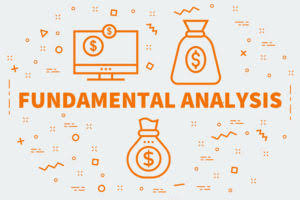
In some cases, revaluation adjustments may be necessary for appreciating assets like real estate. IFRS allows companies to adjust these assets to fair value, with any increase recorded in other comprehensive income. This method is an essential tool in the arsenal of financial professionals, enabling a more accurate reflection of an asset’s value over time in balance sheets and financial statements. Salvage value is the estimated resale value of an asset at the end of its useful life.
- Suppose a company purchased a fixed asset (PP&E) at a cost of $20 million.
- Every year you write off part of a depreciable asset using double declining balance, you subtract the amount you wrote off from the asset’s book value on your balance sheet.
- However, the final depreciation charge may have to be limited to a lesser amount to keep the salvage value as estimated.
- To calculate the double-declining depreciation expense for Sara, we first need to figure out the depreciation rate.
- This article is a must-read for anyone looking to understand and effectively apply the DDB method.
- The double declining balance method achieves this by front-loading expenses, which can be useful for assets generating higher revenues in their early years.
Emagia has processed over $900 in AR across 90 countries in 25 languages.
- Businesses use accelerated methods when having assets that are more productive in their early years such as vehicles or other assets that lose their value quickly.
- In the first year of service, you’ll write $12,000 off the value of your ice cream truck.
- If you would like the name of the asset, or General Asset Account (GAA), included in the title of the depreciation schedule, enter the name in this field.
- For accounting purposes, the DDB method provides a way to manage assets that aligns with their diminishing functionalities.
You get more money back in tax write-offs early on, which can help offset the cost of buying an asset. If you’ve taken out a loan or a line of credit, that could mean paying off a larger chunk of the debt earlier—reducing the amount you pay https://www.bookstime.com/articles/what-are-income-statement-accounts interest on for each period. If you’re brand new to the concept, open another tab and check out our complete guide to depreciation.

DDB Depreciation Formula

This transparency helps stakeholders understand the rationale behind the chosen method and its financial impact. For tax purposes, businesses may use different methods, like MACRS, potentially creating temporary differences between book and taxable income. These differences are recorded as deferred tax assets or liabilities, emphasizing the importance of accurate and consistent reporting practices. Accelerated depreciation is any method of depreciation used for accounting or income tax purposes that allows greater depreciation expenses in the early years of the life of an asset.
Double Declining Balance Method

HighRadius double declining balance method offers a cloud-based Record to Report Suite that helps accounting professionals streamline and automate the financial close process for businesses. We have helped accounting teams from around the globe with month-end closing, reconciliations, journal entry management, intercompany accounting, and financial reporting. To calculate the depreciation expense for the first year, we need to apply the rate of depreciation (50%) to the cost of the asset ($2000) and multiply the answer with the time factor (3/12). Accelerated depreciation techniques charge a higher amount of depreciation in the earlier years of an asset’s life.
- As a hypothetical example, suppose a business purchased a $30,000 delivery truck, which was expected to last for 10 years.
- If no data record is selected, or you have no entries stored for this calculator, the line will display “None”.
- It has a salvage value of $1000 at the end of its useful life of 5 years.
- In some cases, we earn commissions when sales are made through our referrals.
- (An example might be an apple tree that produces fewer and fewer apples as the years go by.) Naturally, you have to pay taxes on that income.
- By applying double the straight-line depreciation rate to the asset’s book value each year, DDB reduces taxable income initially.
- It is optimal for assets that lose efficiency quickly, supporting businesses in aligning their financial records with the physical condition of their capital assets.
No depreciation is charged following the year in which the asset is sold. Therefore, it is more suited to depreciating assets with a higher degree of wear and tear, usage, or loss of value earlier in their lives. Back taxes can be an expensive and challenging issue for many small businesses. Learn how to gather documents and put together back tax returns, even when you don’t have financial records.
- Implement our API within your platform to provide your clients with accounting services.
- Multiply this rate by the asset’s book value at the beginning of each year to find that year’s depreciation expense.
- This functionality is perfect for mastering complex financial concepts in both academic and professional settings.
- Note that in order to depreciate the asset it will need to be in service for more than 1 year.
- The straight-line depreciation percentage is, therefore, 20%—one-fifth of the difference between the purchase price and the salvage value of the vehicle each year.

This method results in higher depreciation costs in the earlier years of an asset’s QuickBooks life, effectively matching the expense timing to the asset’s usage rate. The double declining balance method significantly influences how depreciation is recorded for financial reporting. Depreciation expenses are documented in the income statement, reducing net income, while accumulated depreciation appears on the balance sheet as a contra-asset account. This rate is applied to the asset’s book value at the beginning of each year, not its original cost.

Leave a reply